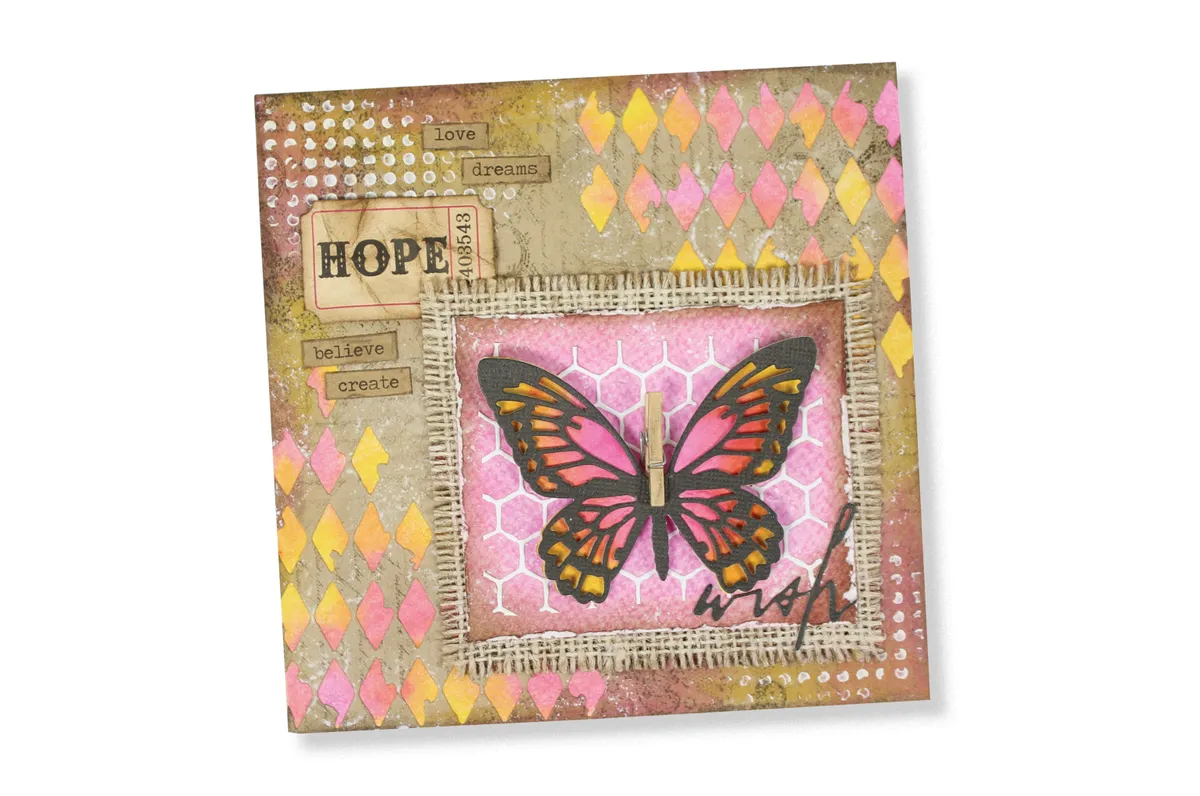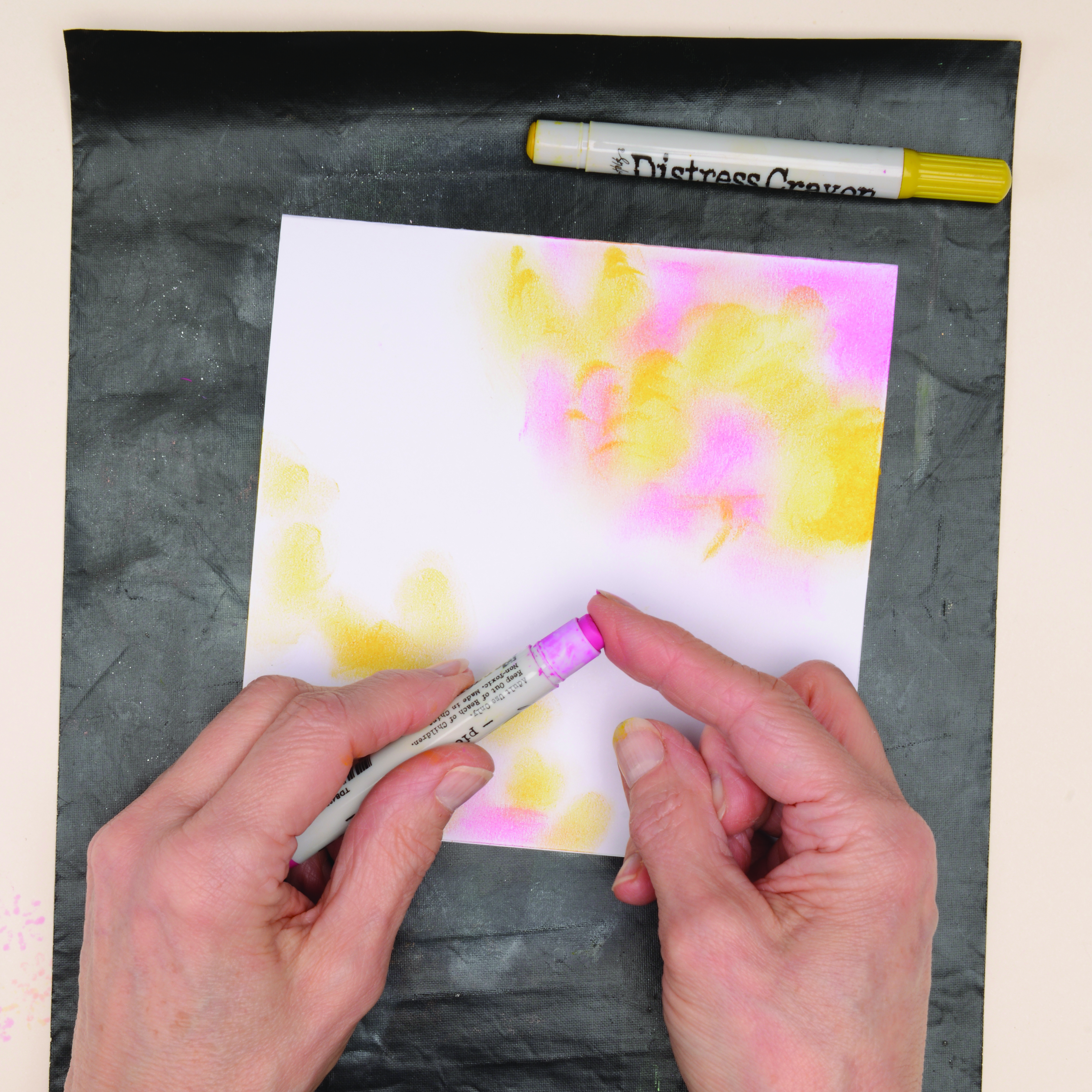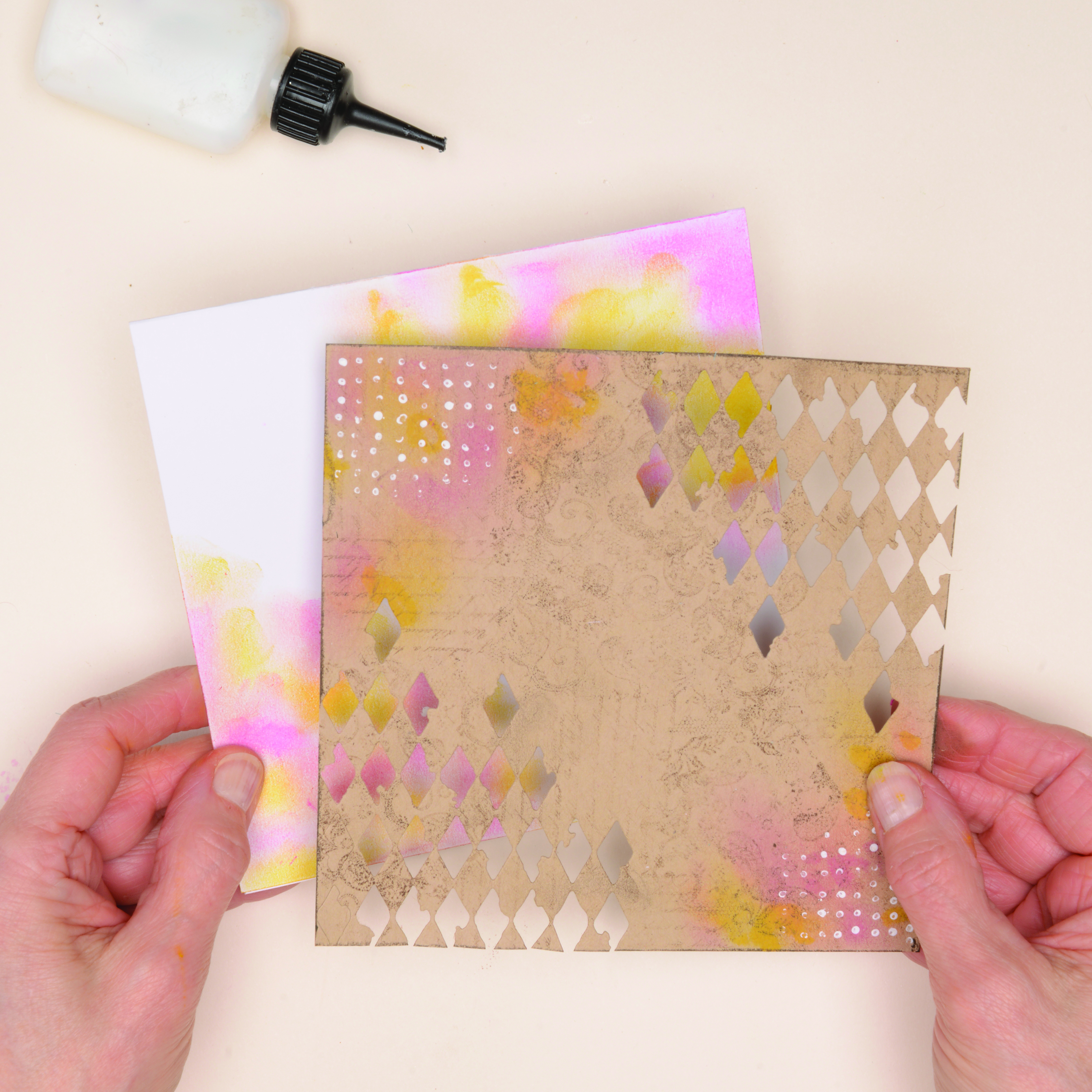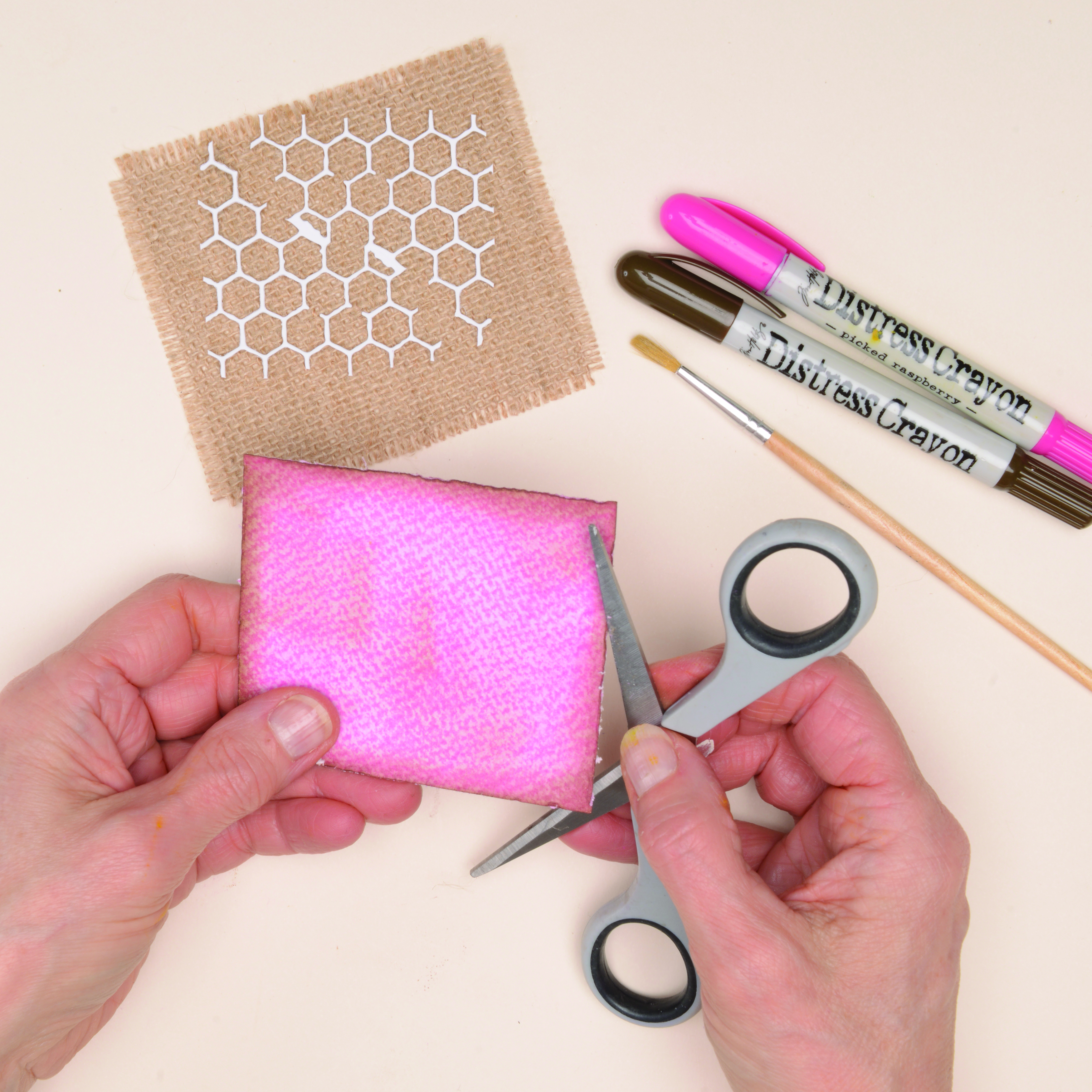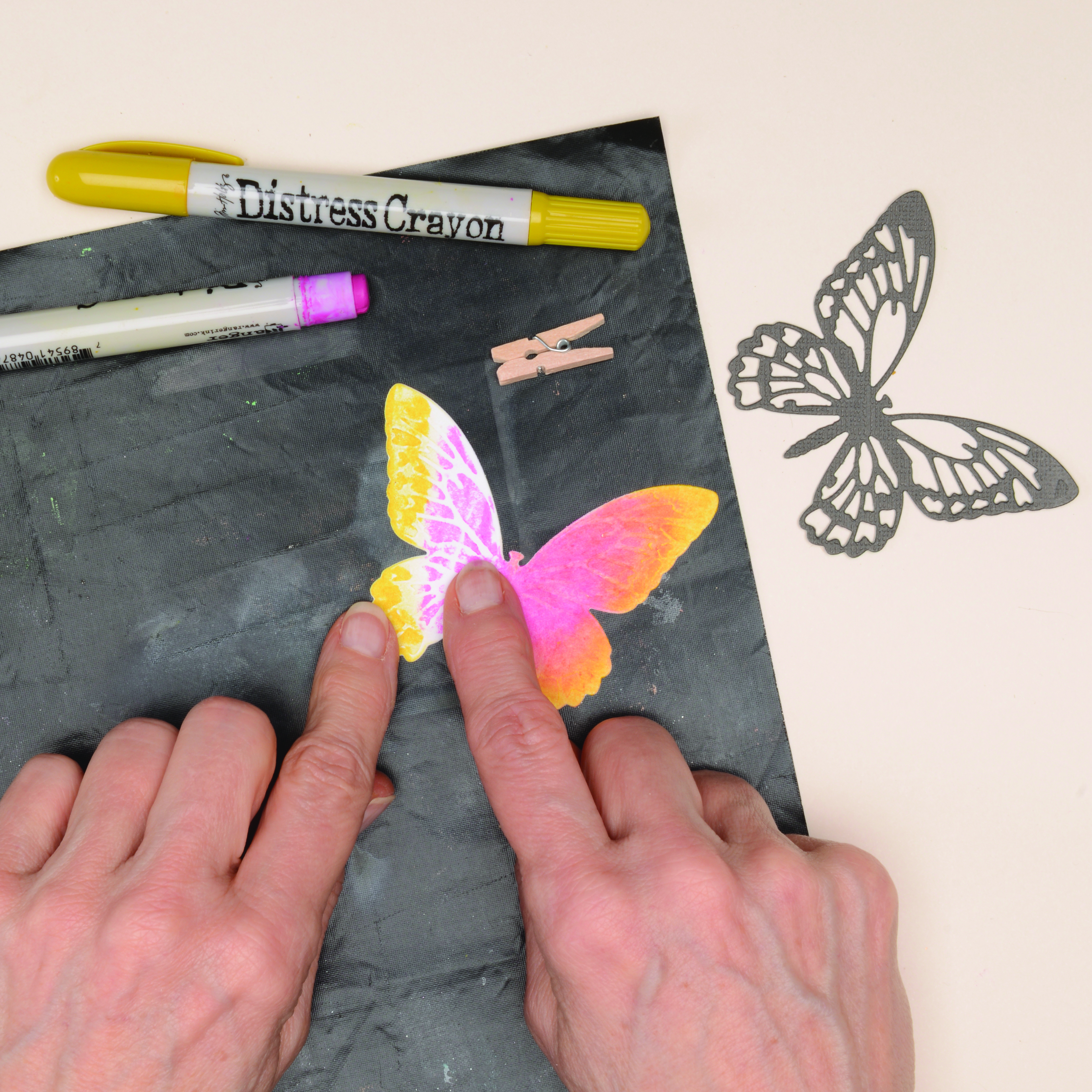Distress Crayons are a useful addition to the toolbox of a mixed media artist. Launched by Tim Holtz as part of his 2016 range with Ranger, they are available in a wide range of different colours and coordinate with the existing palette of much-loved Distress Inks.
The heat-resistant crayons have been formulated to achieve vibrant colouring effects on porous surfaces for mixed media. The smooth water-reactive pigments are ideal for creating brilliant backgrounds, watercolour, smudge effects, texture and more!

The soft and creamy pigment is contained within a lipstick-style pen with a twisting mechanism for easy application. Take your Distress Crayons and colour directly onto your surface, and then either blend with a damp paintbrush or smudge using your fingertip. Try applying the Distress Crayons through a stencil for a textural effect similar to embossing paste. The crayons can also be layered with Distress Inks or Stains for even more creative possibilities.
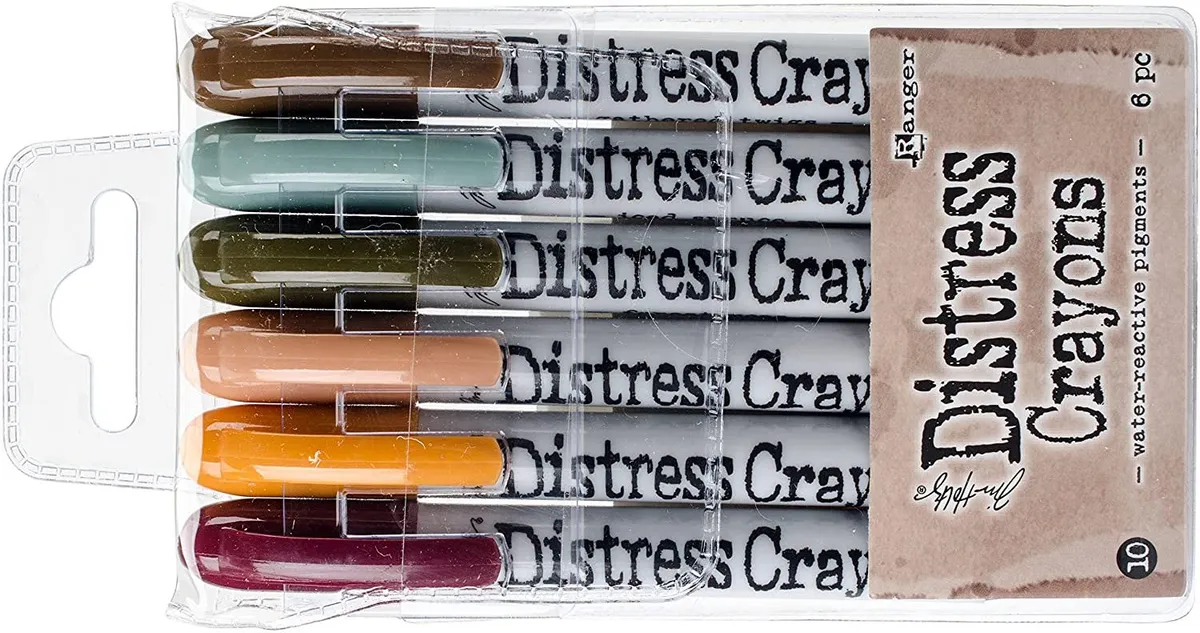
Simone Clay has created this gorgeous multi-media project for us, and here are Simone's top tips for using Distress Crayons:
- Distress Crayons can be applied directly onto any colour of card. Try applying and smudging them with your finger onto black card for a beautiful night sky effect.
- If you use Distress Crayons through a stencil to add texture, be sure to allow the image to dry, or the crayon will smudge. As the crayons are heat-resistant, you can use a heat tool to speed up the drying time.
- Once dry, you can apply Distress Ink over textured crayon using a blending tool. The dried crayon will resist the ink in the same way that a heat embossed image would.
- Prepare your surface with gesso, then apply the Distress Crayons on top and blend with your fingertip. Place a stencil over the coloured surface and wipe through the stencil with a baby wipe. The baby wipe will remove the crayon for a reverse effect!
- If you are using one Distress Crayon on top of another, wipe the tip of the crayon with a paper towel once you have finished, so that you don’t contaminate the colours.
Like this project? Check out our Art section for more exciting projects like this one, we love these DIY painted plant pots! Or how about learning how to paint a watercolour cactus, or create your own monochrome artwork? Have you used Distress Crayons? Show us your artwork on Facebook or post them on Instagram, we love to see what you make!
